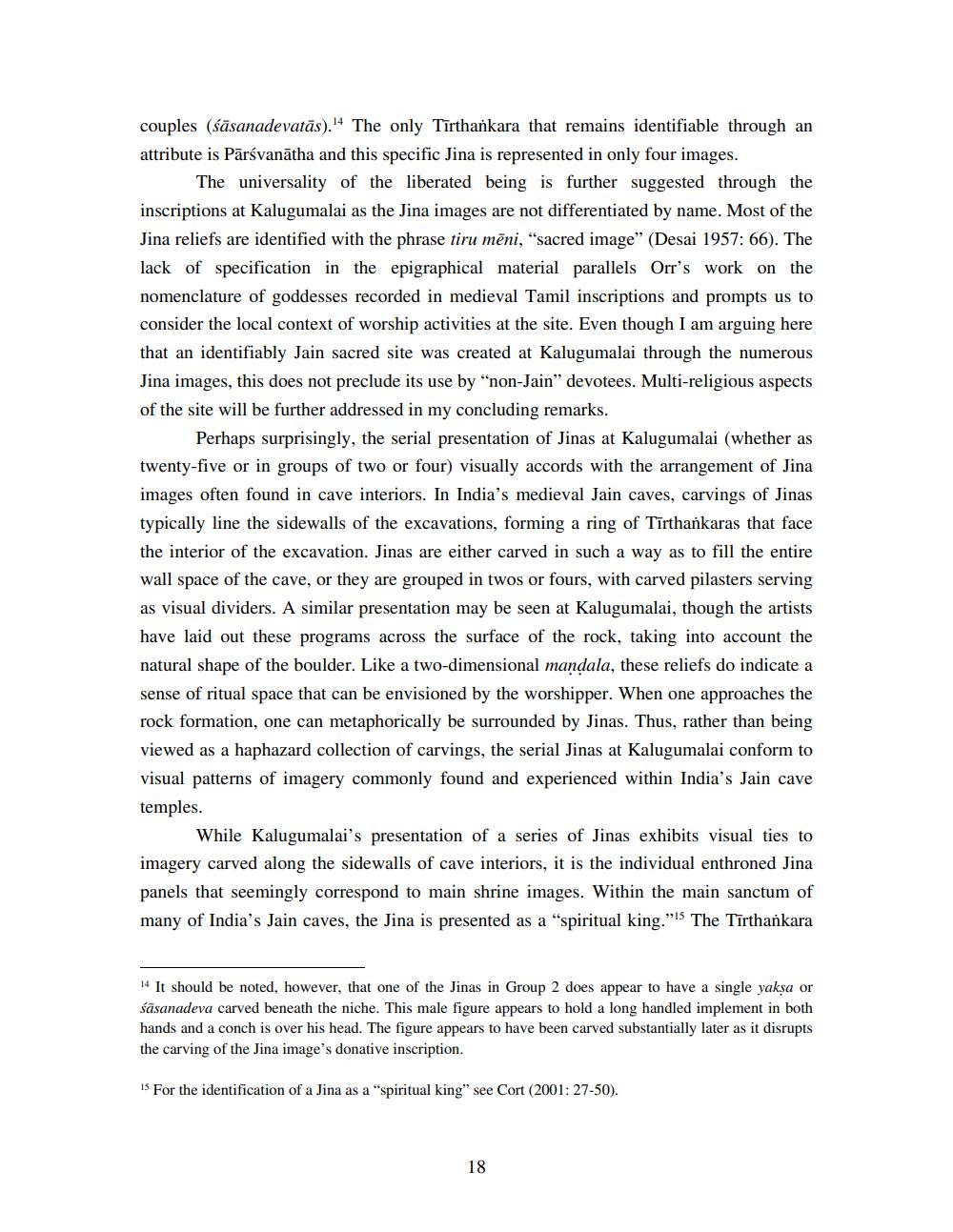________________
couples (sāsanadevatās).14 The only Tirthankara that remains identifiable through an attribute is Pārsvanatha and this specific Jina is represented in only four images.
The universality of the liberated being is further suggested through the inscriptions at Kalugumalai as the Jina images are not differentiated by name. Most of the Jina reliefs are identified with the phrase tiru mēni, "sacred image" (Desai 1957: 66). The lack of specification in the epigraphical material parallels Orr's work on the nomenclature of goddesses recorded in medieval Tamil inscriptions and prompts us to consider the local context of worship activities at the site. Even though I am arguing here that an identifiably Jain sacred site was created at Kalugumalai through the numerous Jina images, this does not preclude its use by "non-Jain" devotees. Multi-religious aspects of the site will be further addressed in my concluding remarks.
Perhaps surprisingly, the serial presentation of Jinas at Kalugumalai (whether as twenty-five or in groups of two or four) visually accords with the arrangement of Jina images often found in cave interiors. In India's medieval Jain caves, carvings of Jinas typically line the sidewalls of the excavations, forming a ring of Tirthankaras that face the interior of the excavation. Jinas are either carved in such a way as to fill the entire wall space of the cave, or they are grouped in twos or fours, with carved pilasters serving as visual dividers. A similar presentation may be seen at Kalugumalai, though the artists have laid out these programs across the surface of the rock, taking into account the natural shape of the boulder. Like a two-dimensional mandala, these reliefs do indicate a sense of ritual space that can be envisioned by the worshipper. When one approaches the rock formation, one can metaphorically be surrounded by Jinas. Thus, rather than being viewed as a haphazard collection of carvings, the serial Jinas at Kalugumalai conform to visual patterns of imagery commonly found and experienced within India's Jain cave temples.
While Kalugumalai's presentation of a series of Jinas exhibits visual ties to imagery carved along the sidewalls of cave interiors, it is the individual enthroned Jina panels that seemingly correspond to main shrine images. Within the main sanctum of many of India's Jain caves, the Jina is presented as a "spiritual king." The Tirthankara
15
14 It should be noted, however, that one of the Jinas in Group 2 does appear to have a single yakṣa or sasanadeva carved beneath the niche. This male figure appears to hold a long handled implement in both hands and a conch is over his head. The figure appears to have been carved substantially later as it disrupts the carving of the Jina image's donative inscription.
15 For the identification of a Jina as a "spiritual king" see Cort (2001: 27-50).
18




